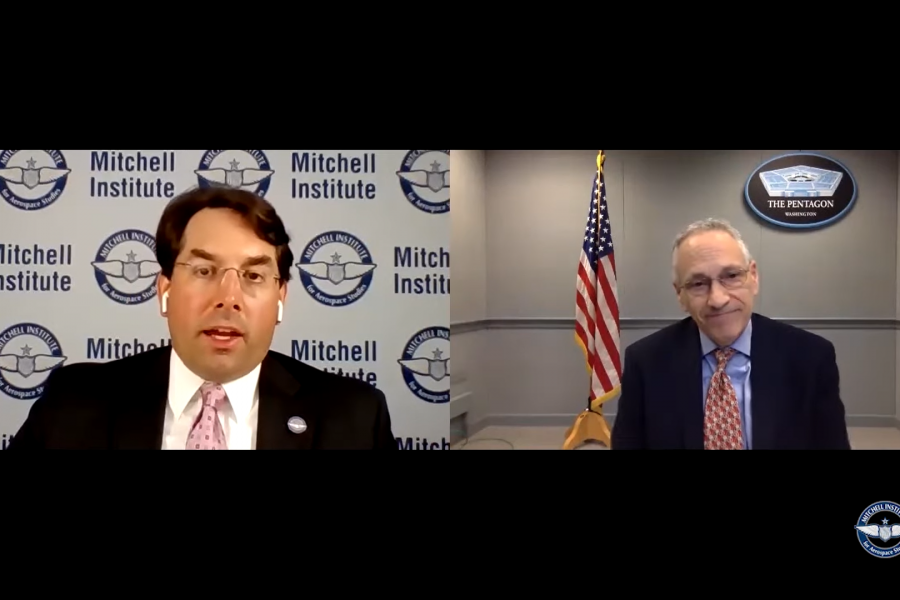The Air Force doesn’t need to grow its stockpile of “tactical” nuclear weapons to complement the Navy’s newly deployed submarine-launched W76-2 warhead, the Pentagon’s top nuclear policy official indicated Sept. 2.
“The Air Force is doing more than its fair share in this area,” Robert Soofer, deputy assistant secretary of defense for nuclear and missile defense policy, said during an AFA Mitchell Institute for Aerospace Studies event. “I don’t think they need to do anything more.”
The Air Force is buying new intercontinental ballistic missiles, air-launched cruise missiles, and nuclear-capable bombers, refurbishing the B61 gravity bomb, designing a modern nuclear command, control, and communications enterprise, and equipping the F-35 Joint Strike Fighter to carry nukes.
With an eye on Russia’s nuclear arsenal, American military officials have started arguing that the U.S. needs to focus not only on geopolitically strategic weapons like the traditional ICBMs and submarine-launched ballistic missiles. Nuclear warfare could emerge on the battlefield in a smaller-scale, regional conflict, and the Pentagon says its existing inventory of nukes wasn’t designed to keep those kinds of attacks in check.
The Navy deployed the estimated 5-kiloton W76-2 warhead on a submarine in the last weeks of 2019, according to the Federation of American Scientists. Though still destructive, its yield is thought to be a fraction of the 90-kiloton W76-1 or the 455-kiloton W88 also used by SLBMs, and about three or four times less powerful than the nuclear bombs the U.S. dropped on Japan in 1945.
Soofer’s comment indicates the Air Force will not follow suit in adopting an additional, smaller warhead for its missiles.
Two future USAF systems, the B61-12 bomb and the Long-Range Standoff Weapon, will already offer “low-yield” options, or 20 kilotons or less, as well as bigger blasts, according to the Federation of American Scientists. The ability to “dial a yield” is touted as an important measure of flexibility in deterrence or combat, though their opponents say using the weapons can still open the door to all-out nuclear war.
The B61-12, which can be fired via free-fall or using precision guidance, is slated for production from fiscal 2022 to 2025, the National Nuclear Security Administration said in June. The first LRSO missile is expected to be built in 2026.
The U.S. has deployed earlier versions of the B61 across Europe, where some believe Russia could use nuclear bombing as a combat tactic to assert dominance or claim territory. Proponents of new weaponry say the Air Force’s low-yield nukes would be flown on aircraft that may not make it through air defense systems like a sub-fired missile could.
The Air Force did not respond to a query about whether it plans to develop additional low-yield weapons as part of its new “conventional-nuclear integration” strategy, which looks at both types of weapons on the same spectrum of conflict instead of in separate categories altogether. That document aims to prepare the service to fight battles where nukes may be used to seize a city or in other, typically non-nuclear scenarios.
